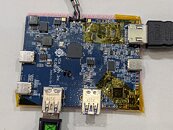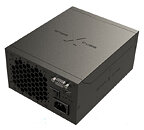
ASUS Announces the New ROG Xbox Ally and ROG Xbox Ally X Gaming Handhelds
ASUS Republic of Gamers (ROG) is proud to announce an all-new series of Ally handhelds built from the ground up with improved ergonomics and a seamless player-first user experience. Developed in partnership with the incredible team at Xbox, the new ROG Xbox Ally and ROG Xbox Ally X offer best-in-class ergonomics and a full-screen Xbox experience that marries the best of Xbox and PC gaming in one cohesive package.
"We wanted to take our handheld to the next level, but we could not do it alone." said Shawn Yen, Head of the Consumer product team at ASUS. "This revolutionary partnership with Microsoft allowed us to forge a brand new device with ROG muscle and the soul of Xbox." The ROG Xbox Ally sports an AMD Ryzen Z2 A Processor with incredible power efficiency, while the ROG Xbox Ally X offers the new AMD Ryzen AI Z2 Extreme Processor for next-level gaming performance. Both launch holiday 2025 in select markets, with additional markets to follow.
"We wanted to take our handheld to the next level, but we could not do it alone." said Shawn Yen, Head of the Consumer product team at ASUS. "This revolutionary partnership with Microsoft allowed us to forge a brand new device with ROG muscle and the soul of Xbox." The ROG Xbox Ally sports an AMD Ryzen Z2 A Processor with incredible power efficiency, while the ROG Xbox Ally X offers the new AMD Ryzen AI Z2 Extreme Processor for next-level gaming performance. Both launch holiday 2025 in select markets, with additional markets to follow.






































































































